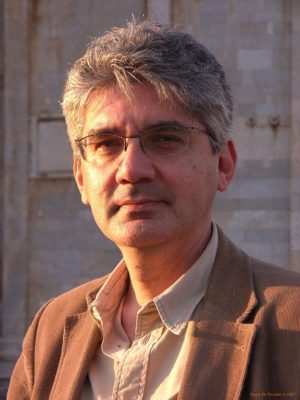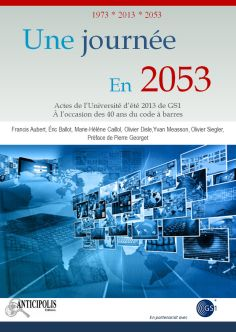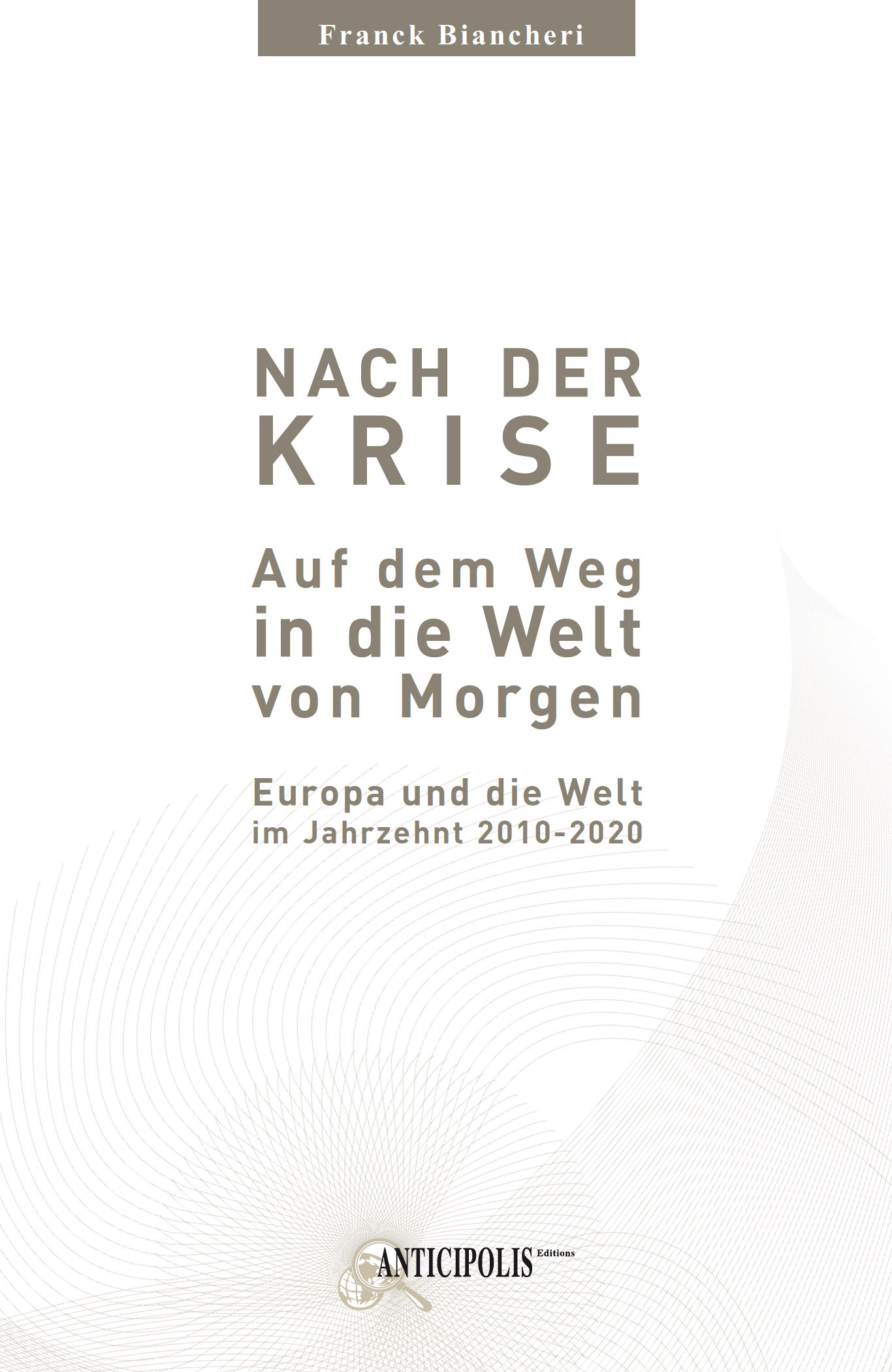Franck Biancheri
The emergence of eurocitizens (Die Entstehung von Eurocitizens)
BROSCHIERT - Erstausgabe 1996 - Neuauflage 2015 - 11x18 cm - 132 p.
18.90€
Auch im E-Book-Format erhältlich
> 4,90 € Französische Version auf Gumroad
> 4,90 € Englische Version auf Gumroad
> 4,90 € Rumänische Version auf Gumroad
Beschreibung
Vor 30 Jahren in diesem Jahr, 1985, in einem Europa, das seine Wirtschaftsunion schloss und begann, seine politische Integration ins rechte Licht zu rücken, trug Franck Biancheri durch die Schaffung von AEGEE-Europe maßgeblich zur Herausforderung bei, Generationen von Eurocitizens hervorzubringen. Und zwei Jahre später, um zu beweisen, dass Europa tatsächlich Euro-Bürger brauchte, erlaubte AEGEE, immer noch unter der Führung von Franck, die Annahme des ERASMUS-Programms, des unbestrittenen Flaggschiffs des europäischen Bauwesens … das jedoch von den nationalen Verwaltungen blockiert wurde. Aufgrund dieses Beweises kämpfte Franck Biancheri dann weiter für die Demokratisierung der EU … nicht aus moralischen Gründen, sondern aus sehr praktischen Gründen: Genau wie ohne AEGEE-Studenten hätte Erasmus n nie das Licht der Welt erblickt, Europa würde ohne europäische Bürger nirgendwo hingehen. Heute, inmitten des Wiederaufbaus der Bedeutung, Effizienz und Verknüpfung des europäischen Projekts mit seinen Bürgern, war es logisch, dieses 1996 von Franck Biancheri verfasste „Little Blue Book“ neu herauszugeben, um die Ambitionen der ursprünglichen AEGEE zu klären Projekt. Europa, das teilweise von der globalen Systemkrise zerstört wurde, braucht die Euro-Bürger von AEGEE-Europe mehr denn je. Franck, der uns 2012 im Alter von 51 Jahren verlassen hat, ist nicht mehr da, um uns davon zu überzeugen, aber er hat uns so sehr verlassen … Lesen wir es noch einmal … jetzt!
| Gewicht | 137 g |
|---|---|
| Größe | 11 × 18 cm |
| Sprache | FR, EN, RO |
ZUSAMMENFASSUNG
Summary
Preface (Edition 2015). . . . . . . . . . . . . . . . . . . . . . . . . . . . . . . . . .9
Foreword . . . . . . . . . . . . . . . . . . . . . . . . . . . . . . . . . . . . . . . . . .13
Preface (Edition 1996). . . . . . . . . . . . . . . . . . . . . . . . . . . . . . . . .16
EGEE I
(January ’84-June’85) . . . . . . . . . . . . . . . . . . . . . . . . . . . . . . . . . . .22
From a project for a student “mega-rave” in Paris to the
launching of the first “Etats Généraux des Etudiants Européens . . .24
How a Prime Minister almost nipped EGEE I in the bud. . . . . . . . . .28
How to survive a 500,000-FF deficit . . . . . . . . . . . . . . . . . . . . . . . . .31
Never did so many (European students) owe so much to so few . . .32
Creating the statues
(July – November ’85). . . . . . . . . . . . . . . . . . . . . . . . . . . . . . . . . . . 36
Making Europe on the 14th of July in Paris. . . . . . . . . . . . . . . . . . . . . 36
A European organisation with no national level. . . . . . . . . . . . . . . . .37
Bringing Europeans into contact, rather than
talking about Europe . . . . . . . . . . . . . . . . . . . . . . . . . . . . . . . . . . . . .37
Non-translated French-English EGEE-speak . . . . . . . . . . . . . . . . . .39
A new organisation founded on three innovations. . . . . . . . . . . . . . .40
EGEE takes off
(December ’85 – April’86) . . . . . . . . . . . . . . . . . . . . . . . . . . . . . . . .43
EGEE confronted with the three plagues of Europe. . . . . . . . . . . . . .43
Existing – in the eyes of European students,
institutions and media . . . . . . . . . . . . . . . . . . . . . . . . . . . . . . . . . . . .43
Developing – or: when modern technology
needs innocence to be useful . . . . . . . . . . . . . . . . . . . . . . . . . . . . . . .46
Taking care not to implode . . . . . . . . . . . . . . . . . . . . . . . . . . . . . . . . 47
First experiences of European democracy
in a Bavarian tavern . . . . . . . . . . . . . . . . . . . . . . . . . . . . . . . . . . . . . .49
Discovering an organisation amnesic from birth . . . . . . . . . . . . . . . .51
An essential lesson in European politics
and democracy . . . . . . . . . . . . . . . . . . . . . . . . . . . . . . . . . . . . . . . . . .52
The arrival of a providential man. . . . . . . . . . . . . . . . . . . . . . . . . . . .54
Rapid growth and the Erasmus Affair
(May’86 – May’87) . . . . . . . . . . . . . . . . . . . . . . . . . . . . . . . . . . . . . .57
A movement spreading everywhere without anyone (except the
students) really knowing what it is…. . . . . . . . . . . . . . . . . . . . . . . . .57
… but a movement to which everyone is starting to give their support . 58
The unexpected charms of the Netherlands
or the pitfalls of Europe . . . . . . . . . . . . . . . . . . . . . . . . . . . . . . . . . . .60
European students to the rescue of Erasmus. . . . . . . . . . . . . . . . . . . .62
The President, the European students and
the EC programme . . . . . . . . . . . . . . . . . . . . . . . . . . . . . . . . . . . . . . .64
A European paradox: The higher you rise, the
harder you fall… even on flat ground. . . . . . . . . . . . . . . . . . . . . . . . .68
Discovering a word that does not exist in
French… but is so useful to democracy. . . . . . . . . . . . . . . . . . . . . . .69
Having only just arrived, we must already
think of leaving . . . . . . . . . . . . . . . . . . . . . . . . . . . . . . . . . . . . . . . . .70
AEGEE in a power upheaval
(May’87 – November ’87) . . . . . . . . . . . . . . . . . . . . . . . . . . . . . . . .73
The arrival of the “arrivistes”. . . . . . . . . . . . . . . . . . . . . . . . . . . . . . .73
Localism and tourism, the plagues of AEGEE . . . . . . . . . . . . . . . . .75
III-intentioned infiltration . . . . . . . . . . . . . . . . . . . . . . . . . . . . . . . . .78
Prometheus, a disturbing nature . . . . . . . . . . . . . . . . . . . . . . . . . . . . .82
The secret charms of Germany or the pitfalls
of Europe. . . . . . . . . . . . . . . . . . . . . . . . . . . . . . . . . . . . . . . . . . . . . . .88
The Seville Bullfight-Agora . . . . . . . . . . . . . . . . . . . . . . . . . . . . . . .94
The difficulties of preparing
a sensitive succession
(December ’87 – April’88) . . . . . . . . . . . . . . . . . . . . . . . . . . . . . . .100
The quaint charms of France or the pitfalls of Europe. . . . . . . . . . .100
Stepping down for youth… whilst awaiting retirement. . . . . . . . . .102
From Rome to London via Euromanagers. . . . . . . . . . . . . . . . . . . .105
A Dutch excursion with Mikhail Gorbachev’s
spokesman. . . . . . . . . . . . . . . . . . . . . . . . . . . . . . . . . . . . . . . . . . . . .108
The EGEE IV Agora and the end of my AEGEE years . . . . . . . . . .110
Chronology. . . . . . . . . . . . . . . . . . . . . . . . . . . . . . . . . . . . . . . .118
The principal AEGEE-Europe events up until 1988
1985
1986
1987
1988
Index. . . . . . . . . . . . . . . . . . . . . . . . . . . . . . . . . . . . . . . . . . . . . . .122
AUTOR
Franck Biancheri
Franck Biancheri (1961 – 2012) war der Studienleiter am LEAP (Laboratoire Européen d’Anticipation Politique), der bereits im Februar 2006 die „globale Systemkrise“ vorausgesehen hatte und seitdem seine Entwicklung in der globalen Europa-Antizipation vorweggenommen hat Bulletin (GEAB), dessen öffentliche Ankündigungen in mehr als 70 verschiedene Sprachen übersetzt und jeden Monat von mehr als 10 Millionen Menschen weltweit gelesen werden. Er war auch einer der Väter des Erasmus-Programms. In den letzten zwanzig Jahren hat er aufgrund seiner Aktivitäten sein Fachwissen in viele Regierungen und Institutionen der Europäischen Union sowie in die USA, die muslimische Welt, Lateinamerika und Asien eingebracht. Er hat auch zwei transeuropäische politische Parteien gegründet: IDE bei den Europawahlen 1989 (Frankreich, Spanien, Niederlande) und Newropeans bei den Europawahlen 2009 (Deutschland, Frankreich, Niederlande).
Ähnliche Produkte
-
Franck Biancheri
EUROPE : COMMUNITY OR EMPIRE? (Europa: Gemeinschaft oder Reich?)
BROSCHIERT : 18 € - Sprachen : EN I FR
PDF : 4.50 € - Sprachen : EN I FR
-
Franck Biancheri Heritage Community
Annuaire des Euro-citoyens 2020 (Euro-Bürger-Verzeichnis 2020)
BROSCHIERT : 70 € - Zweisprachig EN-FR
PDF : 40 € - Zweisprachig EN-FR
-
Olivier Disle - Marie-Helene Caillol - Francis Aubert - Eric Ballot - Olivier Siegler - Yvan Measson
Une Journée en 2053 (Ein Tag im Jahr 2053)
Sprache : FR
-
Franck Biancheri
Nach der Krise - Auf dem Weg in die Welt von Morgen
BROSCHIERT : 20 € - Sprachen : EN I FR I GER I SPA I ITA
PDF : 4,50 € - Sprachen : EN I FR I GER I SPA I ITA









